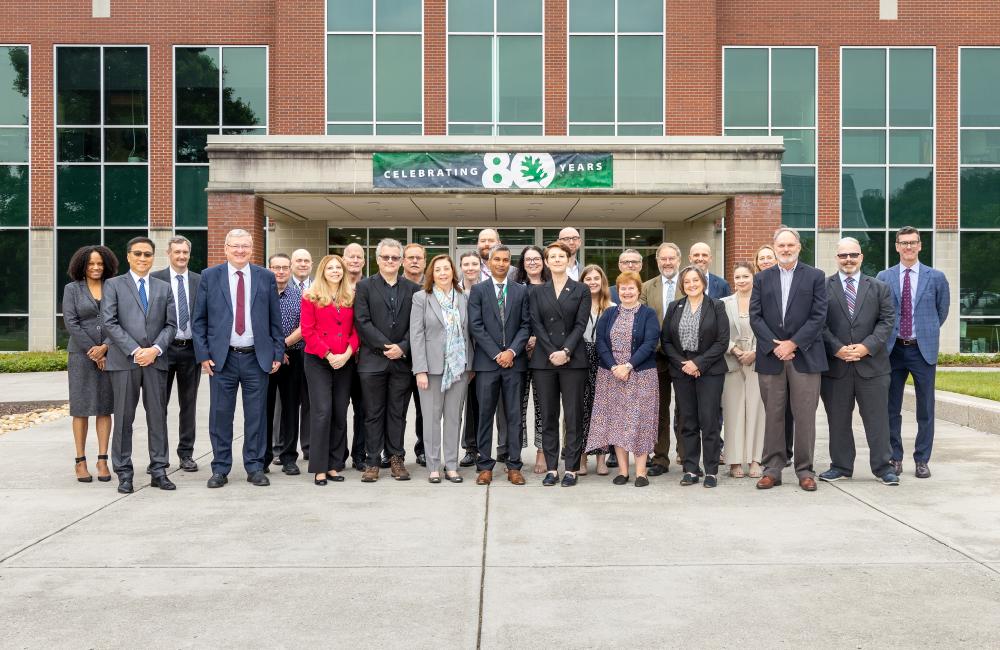The Department of Energy’s Oak Ridge National Laboratory recently hosted senior energy leaders from the United Kingdom and United States to focus on the important role that civilian nuclear energy serves now and moving forward to meet ever-increasing global demands for low-carbon energy. The international meeting coincided with a meeting in Washington, D.C., between U.S. President Biden and UK Prime Minister Rishi Sunak to discuss US-UK leadership on issues of global importance – including civil nuclear energy.
The ORNL-hosted meeting included the Steering Committee for the US-UK bilateral agreement on civil nuclear research and development. Originally signed during a 2018 roundtable at the British Embassy in Washington, D.C., the US-UK nuclear energy group is charged with establishing an action plan for R&D on advanced fission energy technologies. Advanced nuclear energy is a key player in the economic opportunities associated with a clean energy transition.
During this third steering committee meeting, nuclear energy leaders tackled collaboration on isotopes for space application, advanced reactors, advanced nuclear fuels, advanced fuel cycles, modeling and simulation and related crosscutting activities such as public engagement and user facilities.
Steve Napier, senior technical advisor at the UK Nuclear Innovation and Research Office ,and the US Country Coordinator of the bilateral agreement, said, “Great to see us making excellent progress on this important bilateral cooperation and how important that mission is to underpinning progress to net zero. Both our countries working together can make a difference and accelerate key areas of fission R&D.”
The US-UK energy leaders visited a suite of ORNL facilities, including the Coated Particle Fuel Development Laboratory, the High Flux Isotope Reactor, the Irradiation Fuel Examination Laboratory, the Thermal Hydraulics High-Bay Laboratory, and the Oak Ridge Leadership Computing Facility – home to the Frontier exascale computer and the Summit supercomputer. HFIR and OLCF are DOE Office of Science user facilities. The site tours provided leaders with a comprehensive view of the integrated capabilities that ORNL leverages in support of civil fission energy.
“Fascinating to witness the great work that ORNL is doing in support of US efforts to progress civil nuclear,” Napier added. “Understanding some of the wider breadth of capabilities that can be brought to bear supports our cooperative work and develops a deeper technical working relationship and sharing of knowledge between country experts.”
The tour continued with a visit to the Tennessee Valley Authority’s Clinch River Nuclear Site. The Clinch River Nuclear Site is being evaluated as a host site for a potential advanced nuclear small modular reactor, or SMR.
“If a picture is worth 1,000 words, a tour is worth at least 1,000,000 words,” said Andrew Worrall, section head at ORNL, and the UK country coordinator of the bilateral agreement. “The visit has highlighted key capabilities and experience that ORNL, TVA and our partners in East Tennessee provides to the domestic and international advancement of nuclear energy for sustainable development.”
UT-Battelle manages ORNL for the Department of Energy’s Office of Science, the single largest supporter of basic research in the physical sciences in the United States. The Office of Science is working to address some of the most pressing challenges of our time. For more information, please visit energy.gov/science.



